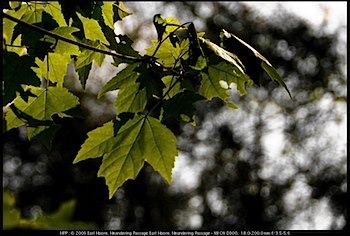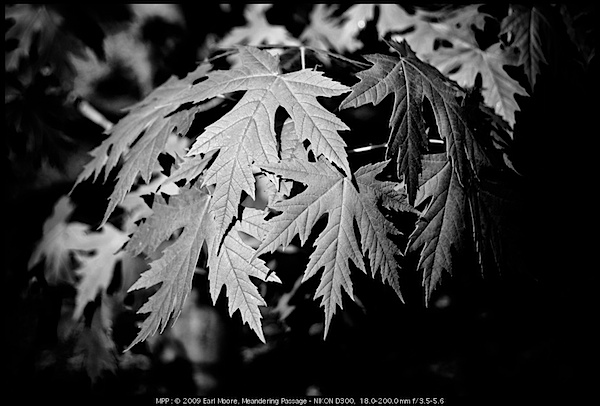Today many of the effects of filters can be applied digitally in post-processing. There’s three filters I use regularly while shooting–ultraviolet (UV), circular-polarizing and neutral density (ND). In the past, on rare occasions, I’ve used an 81A filter to “warm up” flash photography but not recently.
 The UV filter helps cut haze in some circumstances. It is also used by many as protection for the lens glass, kept mounted all the time. Not everyone agrees with this practice.
The UV filter helps cut haze in some circumstances. It is also used by many as protection for the lens glass, kept mounted all the time. Not everyone agrees with this practice.
The circular-polarizing filter reduces glare and reflections off water, glass and certain other shiny surfaces. It also can bring out a much deeper blue sky without affecting clouds.
I’ve use two types of ND filters. A standard ND filter reduces the amount of light equally across all light allowing for longer exposure times and a graduated ND filter which has a varied amount of filtering useful for balancing strong lights and shadows.
For circular filters I’ve standardized on 77mm, using adapter rings to size my 52mm, 62mm, 72mm lens to accept this larger filter size. I also have a set of 6″x4″ graduated ND filters I use on rare occasions.
Everyone has their own brand preferences but I’ve been pleased with the quality and value of Hoya circular filters, Singh-Ray VARI-ND circular filter and Lee 6×4 graduated ND filters.
Are there any other filters you use for common or special purposes? Do you have a particular filter type or brand you like?
Photos: Spring leaves yet to be faded by summers sun, soiled by air pollution, or torn by violent storm. They are the rebirth, fresh and new each spring.
Discover more from Meandering Passage
Subscribe to get the latest posts sent to your email.


Very good, Earl. I wish that I could add more to the story. I’m one of the ones that don’t use UV filters and I, like you, have standardized on the 77mm filter and have step up rings for my lenses with smaller filter thread sizes.
I don’t use filters often, but did use my Vari-ND filter yesterday. It was windy and the plants were swaying back and forth so I did some time exposures. I didn’t get anything worth keeping, but it was fun. :-) I don’t use graduated ND filters, preferring instead to use a tripod, multiple exposures, and Photoshop to blend.
As a matter of fact, I have only 2 filters, both Singh Ray: The aforementioned Vari-ND and a LB warming polarizer (Lighter Brighter), both 77mm. I love the quality of the Singh Ray filters, but not the price! Ouch! Those things are expensive!
Paul, I agree Singh-Ray filters are top notch and if competitively priced I’d use them exclusively–they’re not! The VARI-ND is unique enough to splurge on. Hoya seems to be acceptable for any other filters.
I’ve not done much using multiple exposures blended in Photoshop. That’s an area I need to learn more about.
I settled on two filter sizes, 77mm and 62mm for the Polarizers from B&W. ND and NDgrad I use in Cokin-holders. The color grads I have for those practically live only in the pocket… The chinese ND and NDgrad are not very color neutral, so I consider switching to LEE or Singh-Ray, but if you add S/G to the premium prices, it’s not a fair deal any more.
UV-filters I was despising for decades. But now with two expensive lenses and having seen my first lens with a front element damage on a friend’s camera, I ordered two Hoya filters. No complaints about their optical quality up to now.
Markus, I’d tried B&W filters but felt there was a little more consistency with Hoya. Like you, the more expensive my lens the more I consider using UV-filters for protection. :-)
I’m a Hoya UV filter over the prime lens user even though damage to the front of lens is less destructive than damage to the rear. The polarizer is one I have used extensively when photographing water with rocks or debris beneath the surface. I like the control they give so one can have limited reflection if needed. I’ve enjoyed the discussion of filters in today’s post.